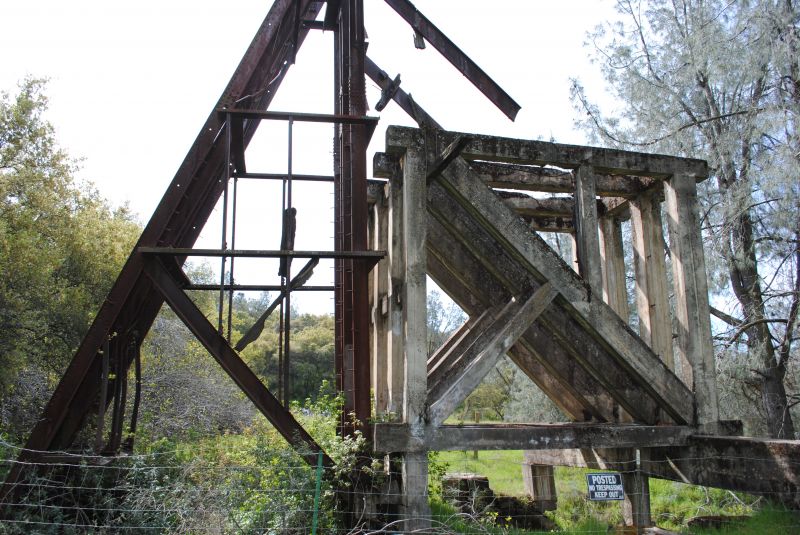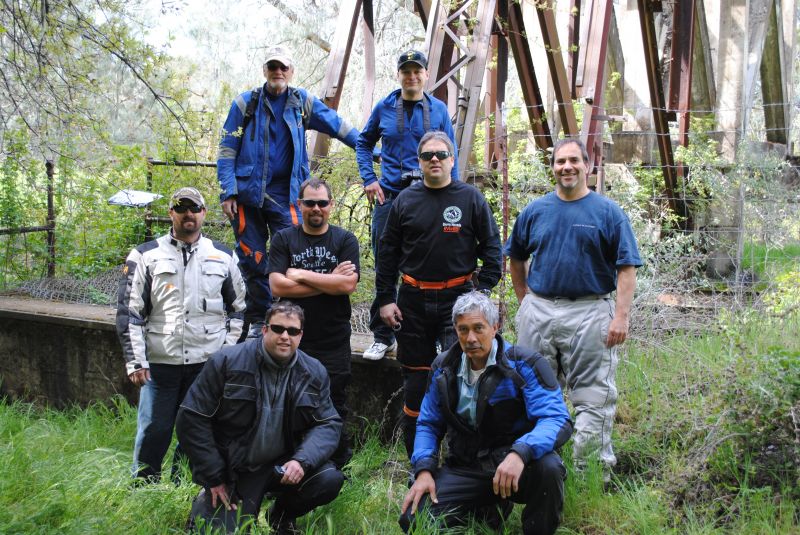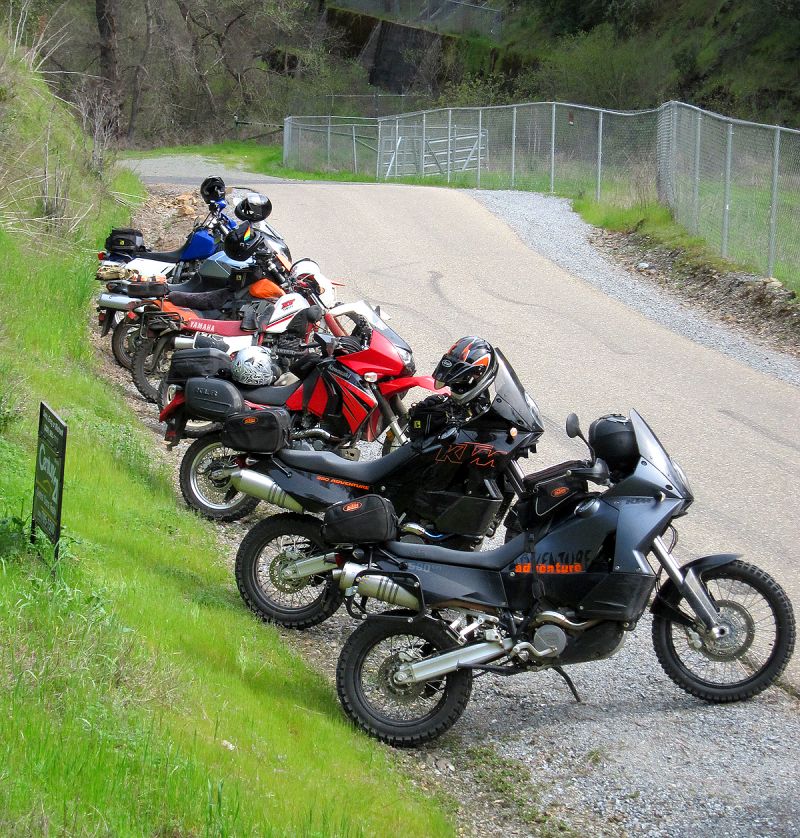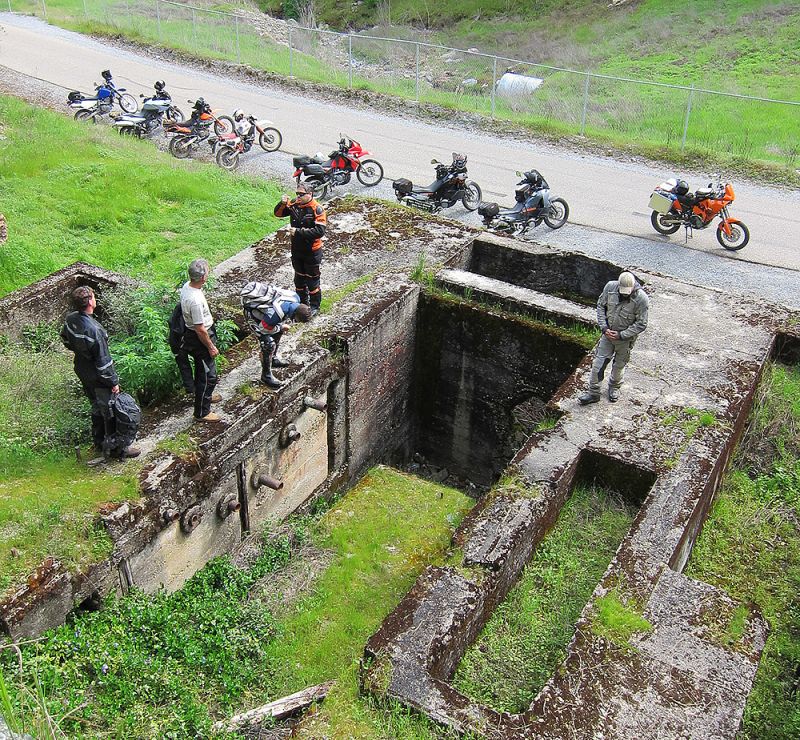Sierra Nevada Adventures Single Day Rides
Amador Gold Country
.jpg) AMADOR GOLD COUNTRY ADVENTURE RIDE
AMADOR GOLD COUNTRY ADVENTURE RIDE
Amador Gold Country ADVENTURE ride EXPORES amazing OFF-ROAD routes, including the best single-lane goat roads, and back roads to historical gold mining sites in Amador County from the California Gold Rush!
If you're looking to EXPLORE historic OFF-ROAD routes and exciting creek crossings, including fun single-lane goat roads, and curvy back roads to historic mining sites, then look no further, this is the ADVENTURE ride you've been looking for. Amador Gold Country ADVENTURE ride is the perfect low-elevation ADVENTURE ride for the early Spring season in the Sierra Nevada Gold Country.
Your adventure begins on the western edge of the Sierra Nevada and before long the pavement ends and the adventure begins as you explore fun dirt roads and exciting creek crossings through groves of oaks and pine-covered foothills. Further, off the beaten path, your adventure explores some of the riches hard-rock mines in the California Gold Country. After the placer gold rush between 1848 and the 1850s, the miners .jpg) began to dig deep into the earth in search of the rich gold veins locked into the quartz rock. The largest vein within the Sierra Nevada is the Mother Lode vein located between Oakhurst near Yosemite and Georgetown in El Dorado County. The 20-mile stretch from the Mokelumne River and the Consumnes River was the richest, producing over $160 million in gold between 1851 and 1942. (Current value over $3.5 billion).
began to dig deep into the earth in search of the rich gold veins locked into the quartz rock. The largest vein within the Sierra Nevada is the Mother Lode vein located between Oakhurst near Yosemite and Georgetown in El Dorado County. The 20-mile stretch from the Mokelumne River and the Consumnes River was the richest, producing over $160 million in gold between 1851 and 1942. (Current value over $3.5 billion).
The first hard-rock mines were found in Amador City in 1851, the original Minister's Claim and Spring Hill mine was the first few mines founded, and soon after many other mines followed. By the 1870s & 1880s, Amador County had over 300 hard-rock mines in operation with some mine shafts over a mile deep into the earth. The Amador Gold Country dual sport adventure ride explores the ruins of many of these hard-rock mines such as the Bunker Hill Mine, Fremont Mine, and the Treasure Mine. The historic dirt mining roads within the dual sport adventure ride will also take you through Michigan Bar, Amador City, Sutter Creek, and Drytown, which is the oldest town in Amador County. Mining for gold began in Drytown in the spring of 1848 when miners discovered gold in the rich gravels along Dry Creek. Although the creek may have run dry during the summer months, legend has it the town never did, as an old story claims some twenty-six saloons wet the miner's thirst during the 1850s and today the only wet spot in Drytown is the road-side Drytown Club.
Event Details:
Single-Day Tour: (15 to 20 riders with 20 riders max)
This adventure ride is designed for (650cc+) to (1250cc+) dual-sport adventure bikes.
Off-road terrain is rated mild to moderate and lots of adventure.
Ride distance approx. 175 miles round trip (65 miles dirt roads)
Gas stops (125-mile range required)
MEETING TIME: 8:30 a.m. (ride starts at 9:00 a.m.)
MEETING LOCATION: Starbucks Folsom CA.
195 Placerville Road, Folsom CA. 95630
Arrive in the morning with a full tank of gas.
Ride returns to Folsom CA. (approx. 5:00 p.m.)
MEALS (Meals not included)
Bring water, snacks, and lunch.
OPTIONAL HOTEL Prior to Event: (Hotel not included)
Riders are responsible for booking their hotel reservations.
-Hampton Inn and Suites, 155 Placerville Rd, Folsom, CA 95630 (916) 235-7744
Additional hotels are available in Folsom CA.
Truck/trailering your bike? Parking is available at the meeting location.
QUESTIONS email: info@SierraNevadaAdventures.com
Still Have Questions?




.jpg)




.jpg)